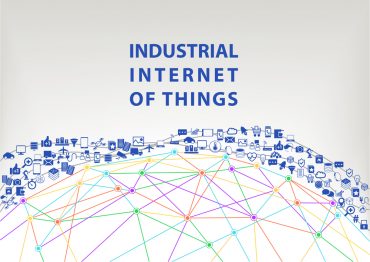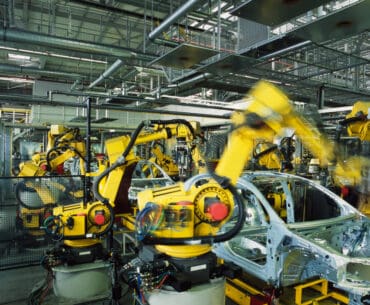
To integrate changes in battery technology into their electric vehicles, automakers need great design and development flexibility, such as that afforded by the use of digital twins, virtual commissioning, and more.
Automakers are not only facing the challenge of transitioning from internal combustion engines to hybrid-electric and electric vehicles (EVs), but they also need to stay ahead of new battery innovations that are reshaping the market. To do so, automakers must change every aspect of their operations, from design to development to production, to incorporate the changes into their lines and make them available to their customers.
To put the impact on automakers into perspective, one need only look at some of the major changes in battery technology that are driving the market. They include:
1. Ultra-Fast Charging Technology
Ultra-fast charging (UFC) aims to dramatically reduce the time needed to recharge an electric vehicle, making it almost as quick as refueling a traditional car. Currently, it can take anywhere from 30 minutes to several hours to fully charge an EV. However, new UFC systems under development aim to get that time down to under 10 minutes, using charging stations equipped with higher-power DC fast chargers.
For automakers, the rise of ultra-fast charging has two major implications: battery design and thermal management. Batteries need to be engineered to handle high-power input without degrading performance, which requires new materials and enhanced cooling systems. From a customer perspective, the ability to charge rapidly and conveniently could become a strong selling point, driving higher adoption rates.
2. Battery Swapping Technology
Battery swapping is another approach designed to overcome the limitations of long charging times. Instead of waiting for the battery to charge, drivers can exchange a depleted battery for a fully charged one at a designated swapping station, all in a matter of minutes.
This concept has already gained traction in markets like China, where companies such as NIO have established extensive swapping networks. For automakers, integrating swappable battery designs into their vehicles can offer a competitive advantage, especially in fleet operations (e.g., taxis and rideshare vehicles) where downtime is critical. Additionally, battery swapping could address concerns around battery degradation, as it shifts the focus from battery ownership to a service-based model, thereby enabling automakers to introduce more affordable EV options.
3. Wireless Charging
Wireless or inductive charging eliminates the need for cables altogether. By parking over a designated charging pad, an electric vehicle can recharge through magnetic induction. This technology is currently available in limited forms but has significant potential for both public and residential use. Automakers are already exploring this integration for future models, which could make EVs more convenient for daily use.
For automakers, this technology poses both opportunities and challenges. On the one hand, wireless charging could enhance the user experience by offering seamless, plug-free charging, particularly for urban drivers with limited access to home chargers. On the other hand, the installation of wireless charging systems requires collaboration with infrastructure developers and municipal planners, presenting a new layer of complexity in EV deployment strategies.
4. Bidirectional EV Charging
Bidirectional charging, or Vehicle-to-Grid (V2G) technology, allows electric vehicles to not only draw power from the grid but also to supply energy back to it. This enables EVs to act as mobile energy storage units that can stabilize the power grid, provide backup power to homes, or even offer energy in emergencies.
For automakers, integrating bidirectional capabilities into EVs involves complex electrical engineering, but it can also be a significant differentiator. Automakers that embrace V2G can position their vehicles as both transportation and energy assets, providing customers with added value in terms of energy independence and potential cost savings. V2G also aligns with global sustainability goals by promoting better energy utilization and reducing strain on power grids.
5. Electrified Roads
Electrified roads are another emerging innovation that could transform the EV landscape. These roads are equipped with embedded charging technology that allows vehicles to charge while driving, either through overhead wires (similar to trams), ground-based conductive systems, or wireless inductive charging systems.
For automakers, electrified roads could shift the design focus from maximizing battery capacity to optimizing energy efficiency. This would not only make EVs lighter and less expensive but also open the door for smaller, urban-focused electric models. Automakers would need to collaborate with governments and infrastructure companies to bring this concept to reality, but the potential long-term benefits make it an exciting area for future development.
A Final Word on EV Battery Technology
The pace of innovation in battery technology is a pivotal factor in shaping the future of electric mobility. The advancements promise to make EVs more convenient, accessible, and sustainable for consumers.
To integrate such technology changes into their vehicles, automakers need great design and development flexibility, such as that afforded by the use of digital twins, virtual commissioning, and more.







